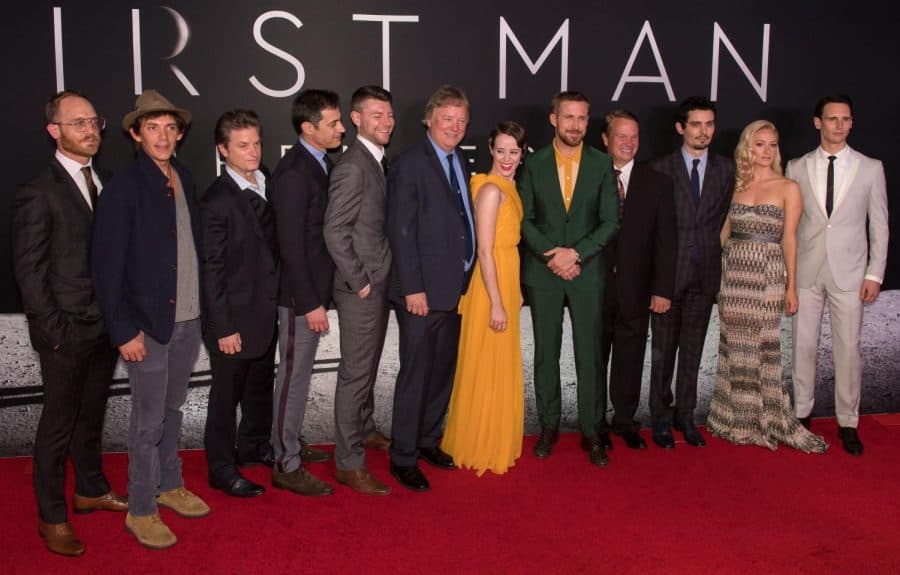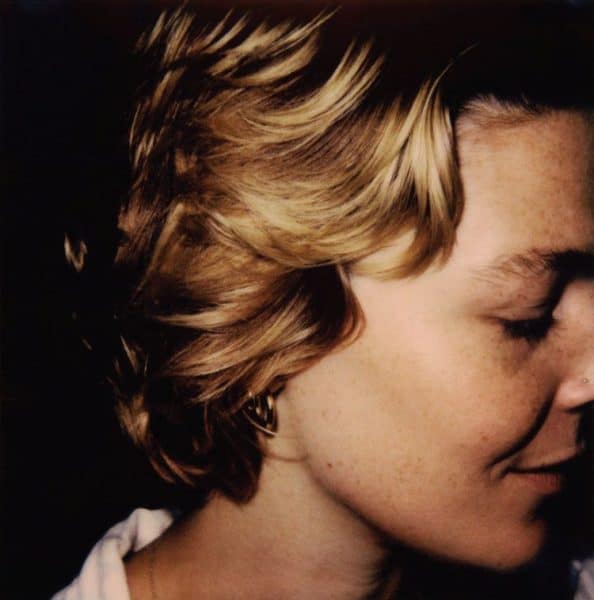“First Man” shows rarely-seen side of an American hero
October 24, 2018
Damien Chazelle’s “First Man” released in theaters two weeks ago to an underwhelming box-office performance. Though “Venom” and “A Star is Born” understandably overshadowed the more narrowly-focused drama, several have speculated that the controversy from the lack of a flag-planting scene on the moon played a role.
While that may be the case, anyone who boycotts the film will be doing themselves a disservice. Having seen the entire movie, it is obvious why the flag-planting scene is omitted; the focus is on the personal life of Neil Armstrong, not on the national achievement of landing on the moon. The two minutes devoted to replaying the momentous act would have distracted from the goal of the movie and wasted the time of filmgoers. If anything, it would have appeared as cheap nationalistic pandering on the part of Chazelle, simply because the message was so ambivalent towards the American story.
Debates aside, the film itself bears the idiosyncratic fingerprints of its director, Chazelle. From his beautiful cinematics to the tension in pursuit of a goal, Chazelle made the story of Armstrong into one of aptly-understated struggle. This is now the third time that Chazelle has shown audiences that one must sacrifice everything if being great is the goal. Chazelle brought along “La La Land” composer Justin Horowitz and actor Ryan Gosling in pursuit of that message.
Gosling’s reserved performance as “First Man” was unengaging in all the right ways. His skill as an actor can be seen shouting through the subtleties of Armstrong’s behaviors. Gosling displays an aloof and determined attitude that lacks warmth in his interactions with others. However, this should not be taken as a lack of emotion, as seen in Armstrong’s continued grief over the loss of his daughter, Karen.
His reaction to the deaths of his fellow pilots and astronauts is what shows the audience there is indeed a man under that single-minded exterior. Gosling’s portrayal of Armstrong’s desire to be alone after these events may be puzzling to some, but his leaving funeral wakes early is both understable and symbolic.
Gosling is continually alone in “First Man” between the death-defying landing of an X-15 in the opening sequence to in his time on the moon. Armstrong’s characterization defies the stereotype of the strong, confident hero. Instead we see a man who is crippled by emotional awkwardness and the grief of losing a child wholeheartedly sell himself to a cause. Because it’s Neil Armstrong, that cause just happened to be one of the greatest human achievements of all time. Gosling’s acting is unengaging, but that is the way it was meant to be, the way that best tells the personal struggle of “First Man.”
However, the greatest performances of “First Man” came not from Gosling, but from Claire Foy. Her performance as Armstrong’s wife, Janet, gave audiences the emotional displays needed in the story due to a sheer lack of emotion from Armstrong. Foy perfectly captures the fear of losing her husband while keeping Janet Armstrong true to herself.
Though Janet Armstrong is a housewife, she is not depicted as the sexist domestic ideal of the time period. “First Man” realistically portrays her as supportive yet multifaceted and complex. In the emotional climax of the movie, she rightly berates Neil Armstrong for trying to leave for Apollo 11 without telling his sons goodbye. Janet Armstrong forces him to tell the children that he might not return from this mission to the moon.
Ultimately Apollo 11 makes it to the moon, as we all know. Chazelle continues to amaze his audience with striking visuals while keeping the plot personal. The majority of striking space images in “First Man” are indeed simply that: images. Armstrong’s story is so personally focused that the shots hold little symbolism.
However, upon arriving on the moon and taking the “first steps,” the lunar landscape is aggressive in its barrenness. The wasteland’s beauty is at once overtaking and underwhelming. My first thought, “They’ve done all this work to get here?” is what I believe to be the intended reaction. A viewer might cast their mind back to the deaths of the test pilots, the astronauts or the enormous expenses of the space program.
The goal of “First Man” is not to belittle the human marvel of the moon landing. This sequence only serves to make Armstrong call into question the sacrifices he made. Was distancing himself from his family worth it? Were the lives of his friends just the price they had to pay?
Neil Armstrong’s most touching scene on the moon is when he drops Karen’s bracelet, which he has kept since her funeral, into the Little West crater. The visual as the bracelet falls into the stark shadow of the crater is one of intense emotion. Does it mean Armstrong will move on? Is this his way of memorializing his daughter? While the scene is ambiguous in that regard, it does act as a turning point into the brief resolution of the film.
Though “First Man” has received criticisms for its portrayal of the domestic white 1960s from liberals and its lack of a flag-planting scene from conservatives, it is simply not concerned with any of those things. Chazelle again poses his trademark questions, “What is greatness and what must you sacrifice to be great?”
For Andrew Neiman in “Whiplash,” it was everything resembling a social life. For the characters of “La La Land,” it was their relationship with each other. For Neil Armstrong, it was emotional intimacy with his family.
Chazelle’s films ultimately lead us to an answer with no subsequent answers or advice. To be truly great, you must sacrifice everything you care about. Though it is not a pleasant thought, it is obviously a theme Chazelle finds important. And, lucky for us, it’s a theme that makes great movies.











